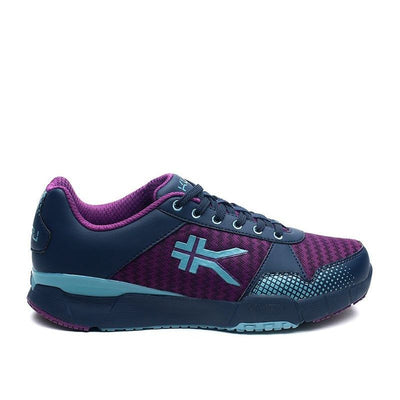Women's Shoes for Hip Pain
(36.2k)
Our patented KURUSOLE features heel cupping technology to properly support your heels and promote overall foot health. Our contoured ULTIMATE INSOLES are built with responsive foam and dual-density arch support that molds to the natural shape of the foot. Finally, our KURUCLOUD midsole absorbs shock to cushion your bones, ligaments, and tendons with each step.
KURU's best women’s shoes for hip pain provide cushion where you want it and support where you need it—all in a single solution so you don't have to worry about transferring inserts in the morning or paying for expensive custom orthotics.
Experience the next evolution of footwear with one of our top-selling hip pain shoes for women.
Register to receive a notification when this item comes back in stock.
Features of Women's Shoes for Hip Pain
The best shoes for hip and back pain incorporate several key features aimed at providing support, cushioning, and stability. These features help reduce the impact on the hips and promote proper alignment, which can significantly reduce discomfort and improve mobility.
Arch Support: Proper arch support is crucial in shoes for hip and back pain. Shoes with built-in arch support help maintain the natural alignment of the foot, distributing weight evenly and reducing strain on the hips.
Cushioned Insoles: Cushioning absorbs shock from walking or running, reducing the impact on the hips. High-quality insoles provide excellent cushioning, making each step gentler on the joints.
Heel Height: Low-heeled shoes are generally better for hip pain. High heels can alter the body's alignment and increase pressure on the hips. A heel height of around one inch or less is typically recommended for optimal comfort and support.
Stability Features: Shoes with stability features, such as a firm heel counter and a wide base, provide better control and balance. These features help prevent excessive foot movement, which can contribute to hip and joint pain.
Flexible Sole: A flexible sole allows for natural foot movement and reduces the strain on the hips. Look for shoes with a flexible yet supportive sole that bends at the ball of the foot.
Wide Toe Box: A roomy toe box provides extra room for the toes to move freely, reducing pressure and improving overall comfort. This feature can help prevent movements that may worsen hip pain.
Lightweight Materials: Lightweight shoes reduce the overall burden on the legs and hips. Materials like breathable mesh or lightweight leather are ideal for reducing fatigue and discomfort during prolonged wear.
Orthotic Friendly: Some shoes are designed to accommodate custom orthotics. Orthotics can provide tailored support and cushioning, addressing specific foot issues that contribute to hip pain.
The best women's walking shoes for hip pain should focus on arch support, cushioning, appropriate heel height, stability, flexibility, a wide toe box, lightweight materials, and compatibility with custom orthotics. With these features, the right pair of shoes can significantly alleviate hip pain and improve overall comfort and mobility.
Choosing the Right Women's Shoes for Hip Pain
Selecting the appropriate pair of women's shoes for hip arthritis is crucial for maximum comfort and effectiveness in alleviating discomfort. Consider the following factors when making your choice:
Proper Fit: Ensure that the orthopedic shoes fit well, providing ample room for your toes and proper support throughout the foot. Take accurate measurements and refer to sizing charts provided by the manufacturer. A good fit prevents unnecessary friction and pressure points, which can exacerbate hip pain.
Arch Support: Look for women's shoes that offer excellent arch support, as this plays a crucial role in maintaining proper alignment and reducing strain on the hips. Proper arch support helps distribute weight evenly, preventing overpronation or supination that can lead to further discomfort.
Cushioning and Shock Absorption: Choose supportive shoes with superior cushioning and shock-absorbing properties, as these features help minimize impact and provide a comfortable walking experience. These types of shoes can significantly reduce the stress on your knees and hips by absorbing the shock of each step.
Heel Height: Choose shoes with a low heel, ideally around one inch or less. High heels can alter your body’s alignment, increasing pressure on the hips and leading to more pain. A slight heel can provide better support and balance.
Stability: Shoes with stability features, such as a firm heel counter and a wide base, provide better control and balance. These features help prevent excessive foot movement.
Flexible Sole: A flexible sole promotes natural foot movement and lessens hip strain. Choose shoes that easily bend at the ball of the foot but still provide adequate support.
By considering these factors, you can select a pair of women's shoes that will help alleviate hip pain and improve your overall comfort.











